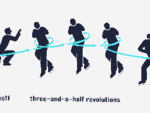For many of us, losing weight and getting into shape are a daily struggle. From gym memberships to working out in organized fitness classes, the risk of developing a sports injury is most common in those individuals who are unfamiliar with proper work out techniques and for those who may not be sure of the early warning signs our body’s send when danger is approaching. When engaging in a work out or fitness activity, it is vitally important to understand the limits and signs of sports injuries such as a knee injury.
Knee injury is the most common type of sports injury. For many individuals, the pain associated with knee injury may be progressive and mild in nature. As a result, you may not be fully aware the injury has even occurred. Eventually, abnormal gait may develop and most often presents as a limp that others may notice well before you do.
In addition to the abnormal gait, sufferers of a knee injury will commonly begin to notice some degree of swelling, stiffness and even loss in range of motion. As the condition worsens, and the knee is not given proper healing, the abnormal gait may lead to low back pain and pain the feet, hips and ankles. So, how do we avoid developing knee injury?
When engaging in fitness and work out routines, it is important to avoid over exertion. This is especially difficult in environments where you may feel pressured to performe at the same level of fitness as others in the class. However, it is important to work out and engage in fitness activities at your own level of fitness and not based on what others in the class may be able to do. Using faulty body movement, including those involving jarring and overexertion, will lead to lifelong complications, especially knee injuries.
Also, when engaging in fitness classes, be sure to use proper upper body and lower body mechanics simulataneously. That is to say, using opposite arm swings when walking and jogging will ensure your knees are not placed under undue stress. When uncertain as to what the proper body mechanics are for a particular fitness activity, consult with a personal trainer or the instructor of your class as these individuals are usually qualified to assess and make recommendations to reduce your knee complications.
And, finally, when engaging in fitness activities with the risk of knee injury, it is important to remember that our bodies need rest. When engaging in highly strenuous fitness activities be sure to allow your body adequate time to rest and recover. This may involve resting every other day or, for individuals who are not presently suffering from a knee injury, this may involve resting only once per week. The key is to listen to your body and rest when muscles feel tired or achey.
As with any sports injury, knowing the early warning signs and seeking out treatment early will aide in preventing lifelong complications. As with knee injuries, when gait seems abnormal and the knees are swollen and stiff, consider resting from your fitness and work out routine in an effort to improve overall fitness and negate knee injuries. When rest does not improve the symptoms, seek medical attention from a qualified sports injury orthopaeidic specialist.



